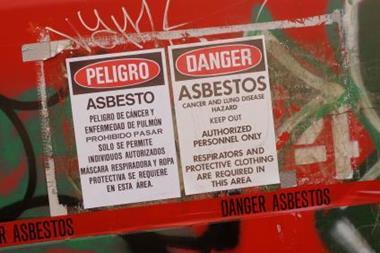SEC filings show companies silent on known risks, say investment managers
Major industrial and other sectors affected by product toxicity risks are doing a poor job of informing shareholders of market risks they face due to toxic chemicals in their products, according to a new study released by the Investor Environmental Health Network (IEHN).
IEHN’s report was based on searches through thousands of SEC filings, and detailed review of more than 25 companies’ reports. The report examines disclosures on supply chain weaknesses before and after the 2007 toy recalls due to lead paint, on scientific studies showing products causing asthma, potential health risks of nanotechnology, and on the new European chemical regulatory program, ‘REACH’ (Registration, Evaluation, Authorisation and Restriction of Chemicals)
Lead author, Attorney Sanford Lewis, said: ‘Our analysis shows that the managers of these companies know much more about these product toxicity risks than they are choosing to share with investors. The companies are not engaging in timely investor disclosure of financially important information on product toxicity risks.’
Lewis said that the lack of disclosure ‘means that many of these companies are likely to be vulnerable to shareholder suits and SEC enforcement actions for failure to comply with the Securities Laws.’
A shareholder resolution filed by Trillium Asset Management at Dow Chemical Company noted that approximately half of Dow’s pesticide products (73 of 149) may be linked to asthma and other respiratory problems. It asked the company to establish an independent panel to examine this issue and to report on possible actions to phase out or restrict these materials. Dow does not now disclose such risks to shareholders. The company has responded to the resolution by contending that such an assessment is more appropriately done by regulators than by the company.
The IEHN said: ‘Dow is basically acknowledging that it will defer to regulators instead of acting proactively on these product toxicity concerns, a potential red flag for Dow investors.’
A shareholder resolution filed by Calvert Asset Management Company, asked the company to report to shareholders on Avon’s product categories containing nanomaterials, and to discuss any new initiatives or actions, aside from regulatory compliance, that management is taking with regard to the issues raised by nanomaterials.
“Our analysis shows that the managers of these companies know much more about these product toxicity risks than they are choosing to share with investors.
The IEHN said: ‘The company has not disclosed any hazards of nanotech used, and has asserted the safety of its use of nanoparticles in sunscreen, despite significant gaps in the state of scientific knowledge on sunscreen nanoparticle safety when used with injured, broken or sunburnt skin, for instance.’
Additionally, the report noted that DuPont has been forced by consumer demand to phase out the use of its controversial chemical, PFOA, despite its ongoing assertions that PFOA does not harm human health. According to the report authors, DuPont has continually failed to provide shareholders with a balanced presentation of what is known to science regarding PFOA hazards.
The report concludes with recommendations to companies, investors, and the SEC, including the following:
• Companies should provide to shareholders additional information on chemical supply chain issues, including sources of materials, risk areas, and control systems.
• Investors should press for better disclosure from companies, through direct correspondence and support of shareholder resolutions seeking such disclosure.
• The SEC should issue new guidance to companies requiring them to more specifically report their product lines vulnerable to Europe’s REACH regulation and should report more fully on credible adverse scientific findings that may impact the company.
By type of risk, key findings of the report include the following:
Bisphenol A
Bisphenol A (BPA), is a chemical in polycarbonate baby and sport bottles and in canned food linings. None of the four major producers of BPA, nor the many companies using these chemicals, had disclosed in their financial reports any awareness of numerous scientific studies evidencing the health hazards that have come to public eye this week. (Today, one of the most prominent producers of BPA products, Nalgene, announced that they were commencing a phase-out of the use of BPA in their sports bottles.)
Toy recalls
Toy makers did not disclose what they knew about lead paint risks. Prior to 2007's recalls of leaded toys, neither Mattel nor Thomas the Tank manufacturer RC2 warned investors of a tide of Chinese product recalls dating back as far as 2001; Mattel's shareholder disclosures of lead paint problems with its own toys lagged by weeks internal company knowledge of such problems.
Likely or possible European bans
Among 10 chemical company filings reviewed in detail, none provide meaningful quantitative data on the numbers of their products or proportions of sales that may be locked out of European markets under Europe's new, stringent chemical authorization requirements. Based on electronic review of filings in the SEC's database, the report demonstrates that most companies that sell products to Europe - from paint and cleaning products, to toys and cosmetics appear - to be glossing over or ignoring major requirements that go into effect this year to preregister the contents of their products in European markets.
Asthma risks
Companies are not disclosing to shareholders the potential for their products to cause or exacerbate asthma. The report notes Dow Chemical and Procter & Gamble as two companies which sell products containing chemicals evidenced to cause or exacerbate asthma, and which are not disclosing these risks to investors.
Nanotechnology
Manufacturers are not disclosing the evidence of health risks of nanotech products, nor the lack of adequate product testing prior to their sales. While some nanomaterials manufacturers disclose potential uncertainties, users of the materials in an array of products from electronics to cosmetics are not disclosing the potential health and financial risks, even though some of these products, known as nanotubes, have been found by scientists to resemble asbestos fibers in structure and respiratory health effects.




















No comments yet